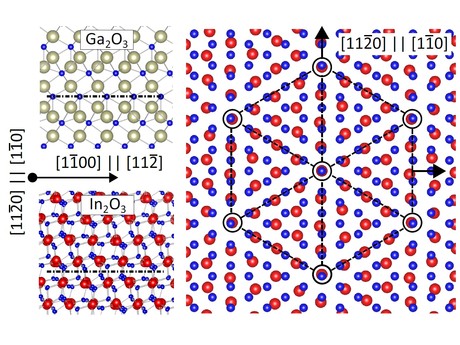New catalytic effect discovered during gallium oxide production

Physicists from Germany’s Paul Drude Institute for Solid State Electronics (PDI) have drastically increased the yield of gallium oxide — a class of semiconducting oxide — with a catalytic effect observed for the first time during crystal growth. Not only is this effect a new discovery, it can also be ported to other materials with similar properties to those of gallium oxide.
Semiconducting oxides are currently enjoying great attention in the field of semiconductor technology. In particular, gallium oxide is notable for its ability to handle extremely high voltages and its optical transparency in the deep ultraviolet region, thus promising a generation of electronic components with unprecedented performance. Such components are based on very thin, ultrapure semiconductor layers produced by special deposition methods, such as physical vapour deposition (PVD).
One particular form of PVD is molecular beam epitaxy (MBE), which the German physicists used in their investigations. The reaction chemistry during MBE is far simpler than in other, more complex semiconductor production technologies. The researchers had therefore not expected to observe a catalytic effect during the MBE process. Writing in the journal Physical Review Letters, they have declared this phenomenon as a new mechanism, which they have dubbed metal-exchange catalysis.
Their experiments revealed that adding the element indium drastically increases the growth rate of gallium oxide during MBE. They also revealed that, in the presence of indium, gallium oxide still forms under conditions in which it could never form without the added element. Moreover, gallium oxide forms a special crystalline structure that is uniquely suitable for developing so-called heterostructures of gallium oxide and indium oxide layers that are essential in many components.
Given the simple reaction chemistry of MBE, the researchers are convinced that the effect observed is generally valid and thus applicable to all materials possessing similar properties to those of gallium oxide. According to first author Dr Patrick Vogt, “The metal-exchange catalysis discovered delivers an entirely new approach to growing crystalline materials, and very likely opens a new pathway towards previously unimaginable semiconductor components.”
Nanoscale pixels to advance augmented reality eyewear
Physicists have developed extremely small pixels that can be used in compact AR glasses, using...
Novel semiconductor shows superconducting promise
Researchers from The University of Queensland have demonstrated superconductivity in...
Light-controlled ferroelectrics for future electronics
Researchers have discovered a way to manipulate the properties of ferroelectric materials quickly...






